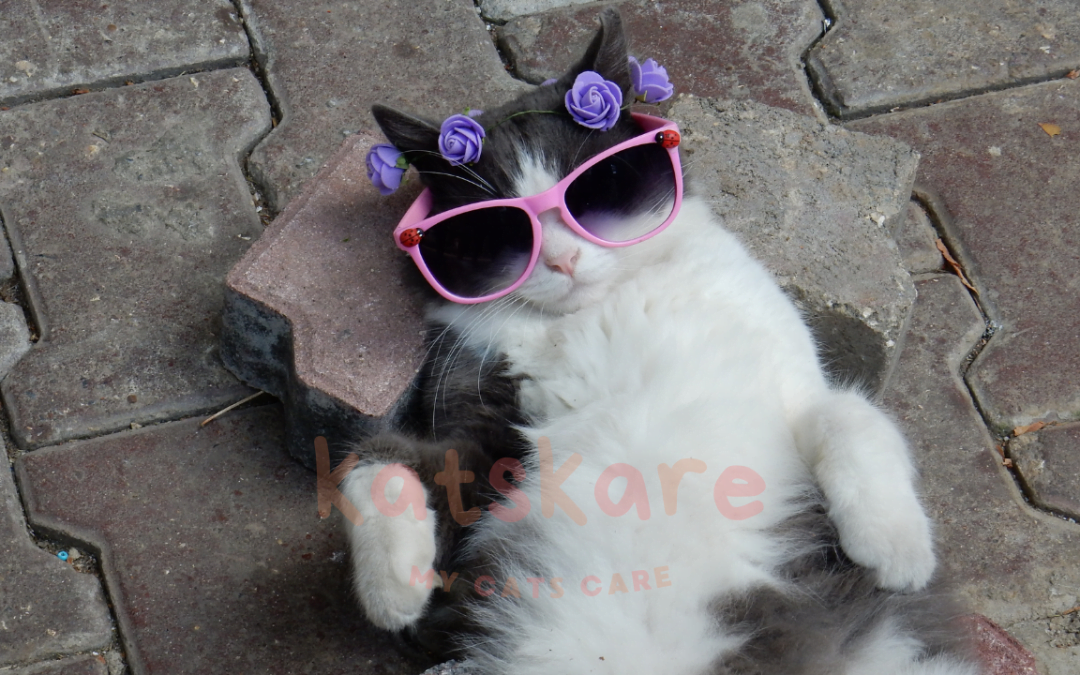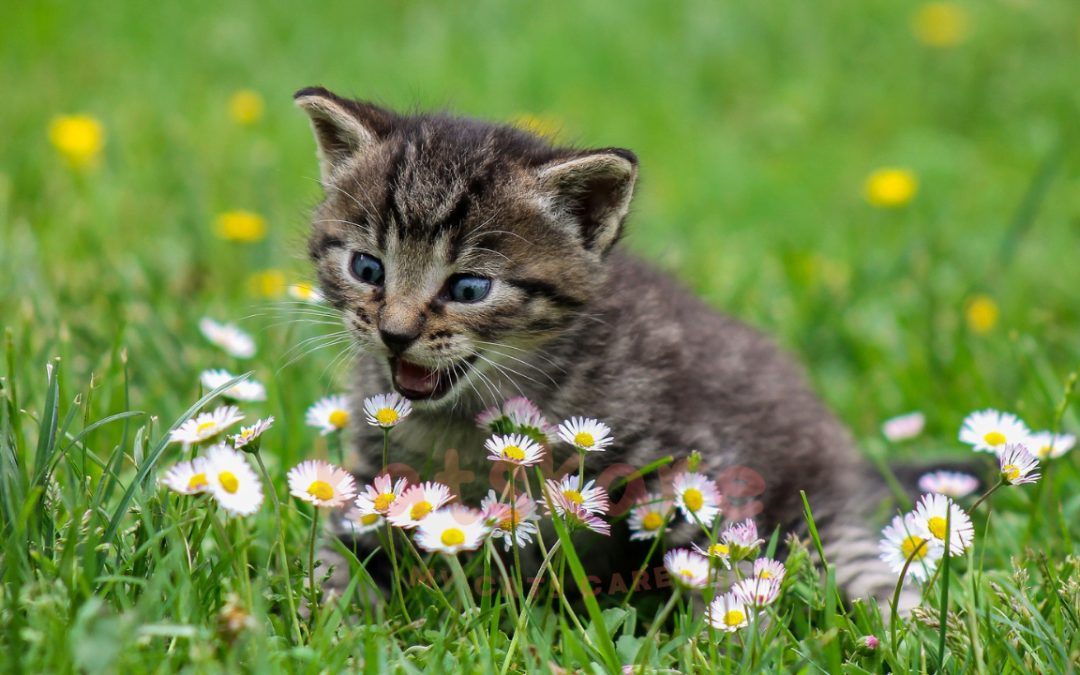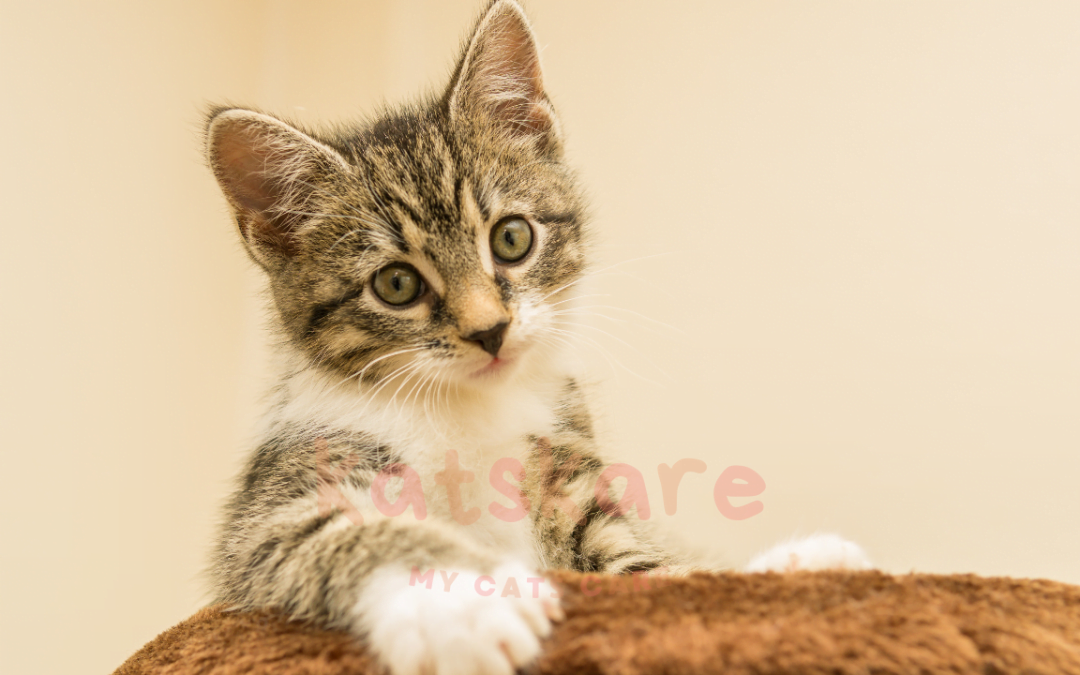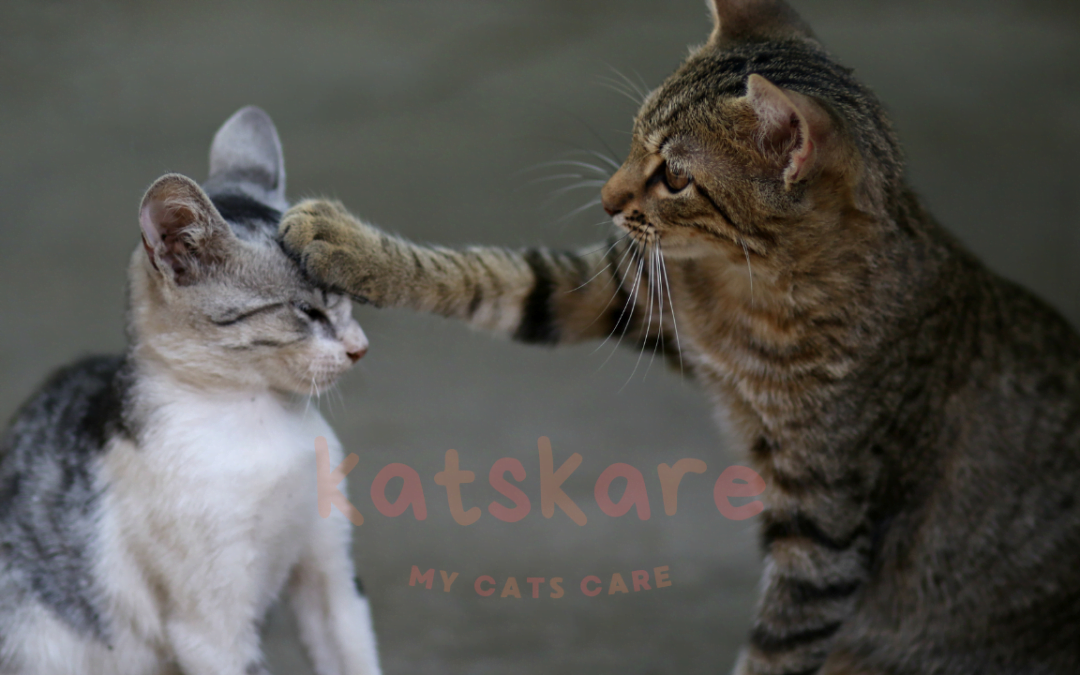
by Muhammed Saeed | Knowledge
Are you a new cat parent who is trying to understand your kitten’s body language? Cats communicate mostly through body language, so it’s important to pay attention to how your kitten is expressing himself.
Here are some of the most common signals and what they mean.
Ears:
Ears are a great indicator of a cat’s mood. When your kitten’s ears are pointing forward, it’s a good sign that he is alert, curious and friendly. If his ears are laid back or flattened against his head, this is a sign that he is scared or feeling threatened.
Tail:
A happy and relaxed cat will typically have a tail held high and swaying from side to side. If your kitten’s tail is tucked underneath him, this could mean he is feeling anxious or uncomfortable. A rapidly twitching tail is often a sign of aggression.
Purring:
Purring is usually a sign that your kitten is content and happy. It can also be a sign that he is seeking attention or comfort, so it’s important to respond to him when he’s purring.
Kneading:
Kneading is often seen in cats when they are feeling relaxed and content. It is usually accompanied by purring and can be a sign that your kitten is seeking attention or comfort.
Meowing:
Meowing is a way for cats to communicate with people. They may meow to get your attention, to ask for food, or just because they want to talk to you.
It’s important to take the time to understand your kitten’s body language so that you can better
communicate with him. Be sure to pay attention to his ears, tail, purring, kneading, and meowing to get an idea of how he is feeling and what he is trying to tell you.

by Muhammed Saeed | Tips
Having a pet cat can be a wonderful experience, but if your home is not cat-friendly, it can quickly turn into a disaster. If you want your cat to feel comfortable and safe in your home, here are some simple tips to make your space cat-friendly.
- Provide your cat with a safe and comfortable place to sleep. Whether it’s a soft bed or a cozy spot on the couch, cats like to have their own space where they can relax. Make sure it’s in a warm and quiet spot away from any potential dangers.
- Create a litter box area that’s out of the way. Cats are private creatures and don’t like to have their litter box in the middle of a bustling household. Try to place the litter box in a quiet corner or a separate room.
- Set up scratching posts and toys. Cats love to scratch, so make sure to provide them with appropriate surfaces to scratch on. Scratching posts are great because they allow cats to get some exercise while also protecting your furniture.
- Provide hiding places. Cats like to hide in small, cozy spaces, so give them a few places to hide if they feel scared or need some alone time. Try a cardboard box, a cabinet, or a cat tree.
- Block off any potential hazards. Make sure to block off any potential dangers in your home like cords, cleaning products, small objects, and other items that your cat could get into.
By following these simple tips, you can make your home cat-friendly and give your feline friend the happy and safe home they deserve!

by Muhammed Saeed | Knowledge
Possessiveness of Kitten and cat, they are known for their independent nature, but it’s also true that they can be quite possessive. From their toys to their humans, cats can be very territorial and protective of their possessions.
Possessiveness of kitten & Cat
Toys
One of the most common ways cats show possessiveness is by guarding their toys. They may growl or swat at other cats who try to take their favourite toy or may even carry it around in their mouths.
Human
Cats can also be possessive of their humans. If a new pet or person enters the home, cats may become jealous and try to gain more of their human’s attention. Cats may also become territorial of certain areas of the house or certain pieces of furniture.
Food
Cats are also known to be possessive of their food. If another cat or pet encroaches on their mealtime, cats may become defensive and even aggressive. It’s important to remember to respect a cat’s boundaries and not force them to share their possessions.
Providing cats with plenty of their own toys, beds, and other items can help reduce any possessive behaviour. If a cat does become possessive, it’s best to redirect their behaviour with positive reinforcement and praise.
Story of Possessiveness of kitten
One little kitten recently proved that even cats can have a possessive streak.
The story of the possessive kitten began when a family in Scotland adopted a small grey tabby from a local animal shelter. From the moment they brought him home, the kitten showed an unusual attachment to his new family. Everywhere they went, the little tabby followed, making it impossible for them to move around the house without him.
The possessive kitten even took to snuggling up with the family at night. He would curl up beside them on the couch or in bed, purring contentedly as he settled in for the night. He would often even sleep on the family’s pillows, claiming them as his own!
The family soon realized that their possessive kitten was not content to be left alone. If they left the house, the little tabby would meow plaintively until they returned. He also refused to be left at home when the family went on trips, opting to travel with them instead.
The possessive kitten may have been a bit of a handful, but his family wouldn’t have him any other way. He brought joy and companionship to their lives and made them feel loved and appreciated.
The story of the possessive kitten is a reminder that cats, as independent as they may seem, still need and crave love and affection from their human companions. All cats are unique and special, and it’s up to us to make sure that we show them the love and attention they deserve.

by Muhammed Saeed | Tips
Socializing kittens is an important part of their development and it’s important to start early. It can help them become more confident and better-adjusted cats as they grow older.
Here are some tips to help you get your kittens used to people, other animals, and their new environment:
- Start Early: Socializing kittens should begin as soon as possible, ideally before they are 12 weeks old. This is the critical time when they are most open to new experiences and positive interactions.
- Establish a Routine: Establishing a routine for your kittens is important for making them feel
comfortable and secure in their new environment. It’s also important for helping them learn to trust people. Feeding, playing, and providing toys at the same time each day can help your kittens feel secure.
- Introduce New People and Animals Gradually: When introducing your kittens to new people and animals, it’s important to do it gradually. Allow your kittens to approach and investigate new people and animals at their own pace and don’t force them if they seem scared or overwhelmed.
- Be Patient: Socializing kittens takes time and patience. It’s important to be consistent and give your kittens time to adjust to their new environment and become used to people.
- Provide Positive Reinforcement: Positive reinforcement is key when socializing kittens. Reward your kittens with treats and praise when they show positive behavior around people and animals.
Socializing kittens is an important part of their development and can help them become confident, well- adjusted cats. With a little time and patience, you can help your kittens learn to trust people and other animals.

by Muhammed Saeed | Tips
Introducing a new kitten to your home can be an exciting and rewarding experience, but it can also be a bit overwhelming if you’re not sure how to go about it. Here are five tips to help ensure that your new kitten’s transition into your home is smooth and stress-free:
Introducing a Kitten to Your Home
- Prepare their space: Before bringing your kitten home, be sure to set up their space. Make sure to provide all the necessities, such as food, water, a litter box, toys, and a comfortable place to sleep. You might also want to consider investing in a scratching post to help keep your kitten from using your furniture as a scratching post.
- Give them time to adjust: When you first bring your kitten home, it’s important to give them time to adjust to their new surroundings. Let them explore their new space and get used to their new home before introducing them to any other pets or people.
- Create a positive association with your scent: When introducing your kitten to your home, try to create a positive association with your scent by rubbing a soft cloth or your hand on your face, then placing it in their bedding or in their favourite spot. This will help them to recognize you as a source of comfort and security.
- Get them used to being handled: It’s important to get your kitten used to being handled so that they don’t become scared or aggressive when it’s time for cuddles or vet visits. Start by offering treats and then slowly working your way up to petting and brushing them.
- Provide lots of love and attention: As with any pet, it’s important to provide your kitten with lots of love and attention. Spend time playing with them, talking to them, and cuddling with them. This will help them to feel safe and secure in their new home.
Introducing a new kitten to your home can be a fun and rewarding experience, but it’s important to take the time to do it properly. By following these tips, you can help ensure that your kitten’s transition into your home is stress-free and enjoyable for everyone involved.





